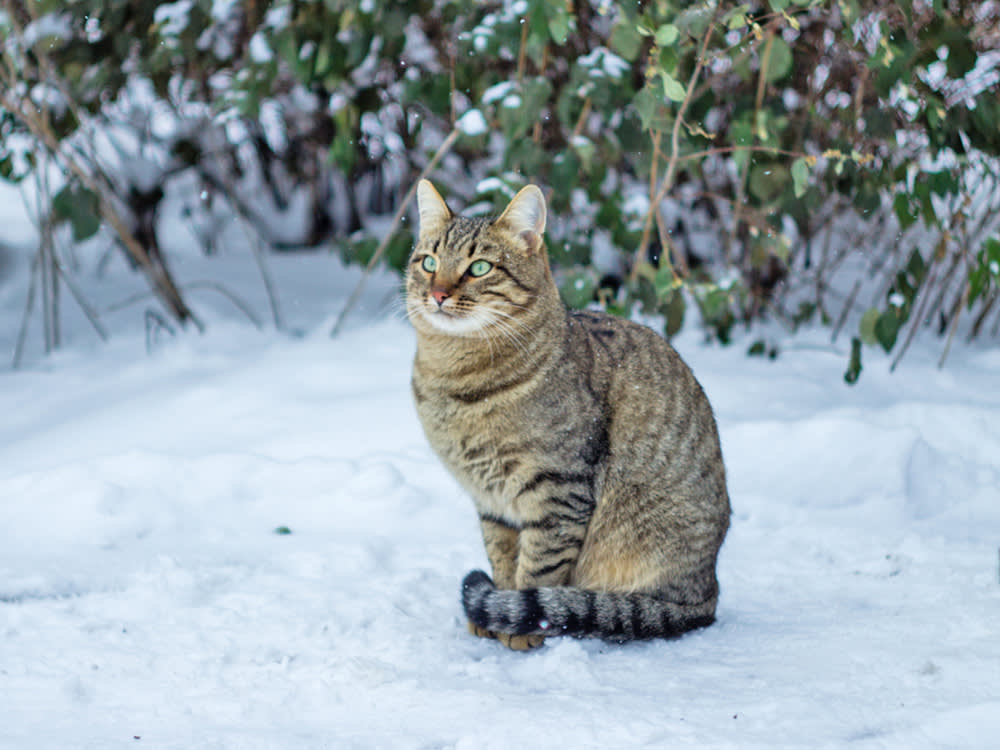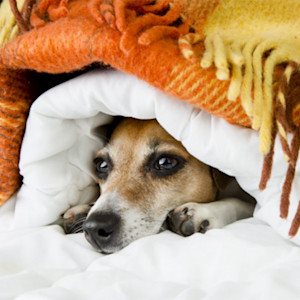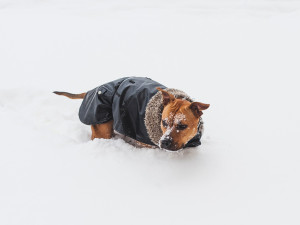Winter Pet Hazards: Keep Your Pets Safe This Season
Winter brings hidden dangers for pets – find out how to keep them safe
As we say goodbye to long summer days and welcome the gorgeous colours of autumn and the crisp frosty mornings, it’s important to consider how the seasonal changes may affect our pets. Being vigilant and keeping our four-legged family members safe is top priority for all pet parents. Find out the most common winter hazards for pets are, and how to navigate them.
Conkers
There is nothing more exciting than standing on a ripe horse chestnut shell as it bursts open to produce a shiny prize winning conker. Although they are often seen as a spider deterrent in homes, sadly they pose a risk to pets, especially for our canine companions. They contain a toxin called aesculin that can cause vomiting and diarrhoea as well as abdominal pain. As they are large and hard they can be a choking risk and, if swallowed, could lead to an intestinal blockage that can be life threatening.
If you have a dog that likes to pick up things on walks it may be worth avoiding walks that include horse chestnut trees or even put the lead back on as you go past. Having a ‘leave’ cue in your training repertoire can also be helpful. As much as it is tempting to kick conkers, that can also encourage chase and grab games with your dog. If you are worried your dog may have eaten a conker or is showing signs of poisoning, contact your veterinary surgeon.
Poisonous plants
Many of us like the colours and blooms that are associated with winter and the festive season, however several common plants are actually poisonous to pets.
The most common plants to be aware of are:
Poinsettias: considered mildly toxic and can cause irritation to the mouth and stomach which can lead to excessive drooling, vomiting and diarrhoea.
Holly: considered moderately to severely toxic – whether it’s the berries or the leaves that are ingested. Ingestion can lead to vomiting, diarrhoea and lethargy as well as the sharp leaves causing trauma to the mouth and digestive tract.
Mistletoe: European mistletoe is considered more toxic than American, and can lead to severe gastrointestinal upset. It can also lead to a difficulty in breathing and a drop in heart rate.
Amaryllis: moderately toxic and ingestion of any part of the plant including the bulbs can lead to vomiting, diarrhoea, lethargy and tremors.
Cyclamen: considered severely toxic, especially the roots. Gastrointestinal symptoms, drooling and seizures have been reported as a result of cyclamen ingestion.
Lilies: highly poisonous to cats and even small amounts can be fatal. All parts of the plant are considered toxic – even the water in the vase. Any ingestion will lead to vomiting, lethargy, excessive drooling and seizures. Even a tiny amount that a cat grooms off its fur whilst brushing past the lily can cause severe kidney damage. Rapid treatment is key if you suspect lily poisoning.
Prevention and early intervention is key when keeping our pets safe around potentially dangerous plants. Keep any plants out of reach or even better opt for pet safe alternatives when decorating. Always contact your veterinary surgeon immediately for advice.
Rock salt and de-icing chemicals
Rock salt and many de-icing chemicals are toxic to pets especially if ingested, inhaled or they come into contact with their skin or paws. As we well know, pets love licking their feet and paws so we always need to be mindful of whether they could be contaminated after walking down a road that has been treated with either rock salt or de-icer. Keeping your pet away from licking puddles is also important as they may contain deicing chemicals in the colder months.
If ingested it may lead to gastrointestinal upset, excessive thirst, seizures and kidney damage. Contact on the skin and paws can lead to irritation and burns which can lead to cracking and discomfort. It is therefore a good idea to get in the habit of washing and drying your dog’s feet when returning for walks. Consider the use of a pet safe balm or wax that you can apply to your dog’s paws before a walk to provide a protective barrier.
Ensure any containers of your own products are securely locked away and clear up any spillages straight away. Try and use products that are labelled ‘pet friendly’ which should be less harmful but still use with caution. If we do have ice and snow, try to walk on untreated surfaces such as grass and woodland rather than pavements or roads.
Anti-freeze poisoning
Ethylene glycol is highly poisonous to dogs and cats, and even the smallest amount can be fatal if ingested. The problem with the solution is that it has a sweet taste that seems to attract animals. If ingested it works fast and can lead to severe kidney damage, so immediate treatment is critical with these cases. Cats are especially sensitive and so please be mindful if you cat suddenly starts showing these symptoms:
Early symptoms (30 mins–12 hrs)
vomiting
lethargy
staggering and lacking coordination (almost like they are drunk)
excessive thirst and urination
Intermediate symptoms (12–24hrs)
rapid heart rate
rapid breathing
dehydration
Late symptoms (24–72hrs)
seizures
If you suspect your pet has ingested anti-freeze, seek emergency treatment immediately as prompt treatment can save their life.
Festive food hazards
We all like to overindulge over the winter and fill our trolleys with all our favourite comfort food, vowing to start afresh in the New Year, but many festive treats and meals can be dangerous or even toxic to our four-legged family. Here is a list of the most common pleasures that we need to be aware of:
Chocolate: highly toxic to dogs and cats, it contains theobromine and caffeine which our pets can’t metabolise well. It can cause stomach upsets as well as an increase in heart rate, tremors and seizures. Dark and cooking chocolate carry the most risks so ensure you store them safely.
Onions, garlic and chives: vegetables in the Allium family are highly toxic to dogs and cats as they damage the red blood cells which can lead to anaemia. Ingestion of even small quantities can cause vomiting, weakness, pale gums and breathlessness. Even small amounts in cooked foods such as stuffing and gravy can be harmful, so it’s best to avoid it altogether.
Grapesopens in new tab, raisins and currants: fruits and dried fruits in the Vitaceae family are highly toxic to dogs and possibly cats as they cause kidney failure. Symptoms will include vomiting, diarrhoea, lethargy and abdominal pain. Fruitcake, mince pies and Christmas puddings are always overlooked but all contain these ingredients.
Alcohol: extremely dangerous to our pets as they cannot process the alcohol. It can lead to vomiting, disorientation tremors and even comas. Always be cautious with your alcohol-based desserts, too, such as trifle and tiramisu.
Macadamia nuts: toxic to dogs and ingestion can lead to serious illness. Vomiting, hyperthermia and difficulty walking are symptoms to look out for. Many cookies will contain these nuts, particularly during the festive season.
Fatty foods: although not directly toxic, high-fat foods can lead to pancreatitis, a very painful life threatening condition. Turkey skin, bacon and gravy are potential culprits and can lead to vomiting, diarrhoea and anorexia. Many dogs will need supportive care if they develop this condition.
Bones/carcass: cause choking and intestinal blockages or even perforations in the digestive tract. Cooked bones can splinter which on ingestion can lead to vomiting, constipation or abdominal pain and should never be given to your pets.
As much as we love to treat our pets, especially by sharing what’s on our plates, please be mindful that many festive foods can cause illnesses, some of which are life threatening. There is not a day that goes by during the festive period where a dog is not rushed into the veterinary surgery to have induced vomiting after ingesting something they shouldn’t.
Cold weather-related risks
There is nothing more enjoyable than a dry crisp frosty morning, walking our beloved pooch whilst wrapped up in a cosy coat. However, cold weather can pose a risk to our pets too, especially if pets are exposed for prolonged periods of time. Whilst certain breed types can tolerate the cold better than others, always be mindful of how your pet is coping.
Hypothermia can affect pets and can cause the same symptoms as us; shivering, weakness, low heart rate and pale gums. Be sure to limit your time outside for smaller, older pets or breeds with thinner coats. Investing in pet-safe clothing that will give them some more layers may be well received.
Freezing of the skin, ears, paws and tails can lead to frostbite which is extremely painful. Areas of skin may become red and puffy once warmed up so be sure to keep outdoor exposure brief during freezing temperatures. Booties are available to use, however ensure that your pet is happy and accustomed to them before venturing out.
Pets with arthritis can suffer more when the weather gets colder leading to stiffness and discomfort. So it might be best to do shorter, more frequent walks during the colder months of the year.
Decorations
Decorations such as tinsel and ribbon can prove an exciting toy to some as well as baubles and festive ornaments. As tempting as it is to have our feline friend chase us around the room pouncing on the end of a ribbon it can lead some to start chewing. Sadly some cats will not just stop at chewing and may actually start ingesting items they shouldn’t. So please supervise your pets when they are around decorations and if they are known to be mischievous chewers, then keep everything out of reach!
Fireworks
Sadly fireworks aren’t just a one-night affair, and they can continue from early October right through to the New Year. With this comes households of anxious pets and unhappy parents. It’s best to prepare in advance so that you are ready for that time of year. With time and effort we can reduce the stressopens in new tab that our pets feel during the firework season.
Seasonal Canine Illness (SCI)
Seasonal canine illness is a rare condition that can affect dogs in the autumn. It is thought that dogs who walk in woodland are more susceptible. Unfortunately the cause is still unknown and there is no cure. The main symptoms are vomiting, diarrhoea, abdominal pain, lethargy and high temperature. Recovery is possible with early supportive treatment including antibiotics and anti-sickness medication.
Fleas
As we humans start to turn the heating on, it’s the perfect environment for fleas to breed and cause havoc on our pets (and us, if they find us tasty). Understanding the flea life cycle and how to manage fleas is something of an art but can easily be done when you know how.
Stress
The hustle and bustle of the festive season can be quite unsettling for our pets. Routines change, visitors arrive and everyone becomes a little bit more excited. Always be aware of your four-legged family members too, as often they will not want to be the centre of attention. Make sure they have access to their favourite safe places, where they can take themselves away for some time out and be respectful of their needs and ensure they get space to allow them to chill out. If our pets get stressed it can affect their health and bring with it illnesses.
Being mindful of these winter hazards ensures our four-legged family is kept safe and secure. Snuggle up, turn on that box set and embrace the colder months, it will be spring before we know it.











